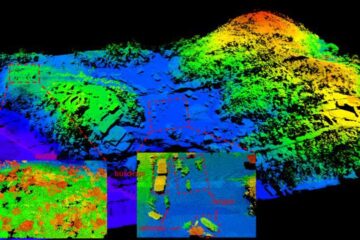Polyester clothes stink after exercise; cotton, not so much

In the study, the investigators collected t-shirts from 26 healthy individuals following an intensive, hour-long bicycle spinning session, and incubated the shirts for 28 hours before having them inspected by a trained odor panel. The researchers also investigated the taxonomy of the bacteria on the shirts, and in the axillaries.
Freshly secreted sweat has little odor, because the long-chain fatty acids the axillaries secrete are too big to be volatile, says first author, Chris Callewaert of Ghent University, Belgium. Bacteria break these, as well as hormones and sulfur compounds, down to waftable sized, odoriferous molecules.
On the clothes, the main culprit bacteria are micrococci, says Callewaert. “They are known for their enzymatic potential to transform long-chain fatty acids, hormones, and amino acids into smaller—volatile—compounds, which have a typical malodor.”
Staphylococci, which inhabit both axillary skin and adjacent textiles (the latter with much less diversity), create a normal, non-malodorous body odor, he says.
“The micrococci are able to grow better on polyester,” says Callewaert. He is currently investigating exactly why polyester encourages their growth, and suspects it has to do with the nature of its surfaces.
Corynebacteria are the main causes of bad odors in the armpits, but these anaerobes fail to grow on textiles, says Callewaert.
The impetus for this research is the suffering caused by unpleasant body odor (BO), says Callewaert, who has been consulted by more than 200 patients with this problem, and who runs the website, drarmpit.com.
“BO is taboo, and its prevalence is greatly underestimated,” he says. “There is little these people can do to help themselves. Some of them are too psychologically distressed to talk to strangers, or even to leave the house, afraid of what people might think of their smell.”
Wearing cotton clothes will reduce the problem somewhat, says Callewaert. But his ultimate objective is to solve the problem of body odor, by transplanting microbes from non-malodorous relatives to those afflicted. (Early results are promising, he says.)
More generally, Callewaert advises people with smelly armpits to avoid overusing antiperspirants, which he says can encourage enrichment of the odor-causing corynebacteria in the axillae. “That is what I have heard from people with BO—the more they use it, the worse it eventually got,” he says. But deodorants did not worsen the problem.
The manuscript can be found online at http://bit.ly/asmtip0914a. The final version of the article is scheduled for the November 2014 issue of Applied and Environmental Microbiology.
Applied and Environmental Microbiology is a publication of the American Society for Microbiology (ASM). The ASM is the largest single life science society, composed of over 39,000 scientists and health professionals. Its mission is to advance the microbiological sciences as a vehicle for understanding life processes and to apply and communicate this knowledge for the improvement of health and environmental and economic well-being worldwide.
Media Contact
More Information:
http://www.asmusa.orgAll latest news from the category: Life Sciences and Chemistry
Articles and reports from the Life Sciences and chemistry area deal with applied and basic research into modern biology, chemistry and human medicine.
Valuable information can be found on a range of life sciences fields including bacteriology, biochemistry, bionics, bioinformatics, biophysics, biotechnology, genetics, geobotany, human biology, marine biology, microbiology, molecular biology, cellular biology, zoology, bioinorganic chemistry, microchemistry and environmental chemistry.
Newest articles

A universal framework for spatial biology
SpatialData is a freely accessible tool to unify and integrate data from different omics technologies accounting for spatial information, which can provide holistic insights into health and disease. Biological processes…

How complex biological processes arise
A $20 million grant from the U.S. National Science Foundation (NSF) will support the establishment and operation of the National Synthesis Center for Emergence in the Molecular and Cellular Sciences (NCEMS) at…

Airborne single-photon lidar system achieves high-resolution 3D imaging
Compact, low-power system opens doors for photon-efficient drone and satellite-based environmental monitoring and mapping. Researchers have developed a compact and lightweight single-photon airborne lidar system that can acquire high-resolution 3D…





















